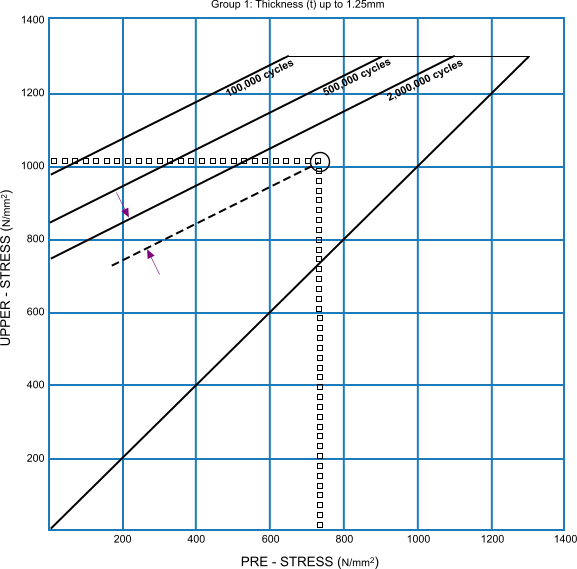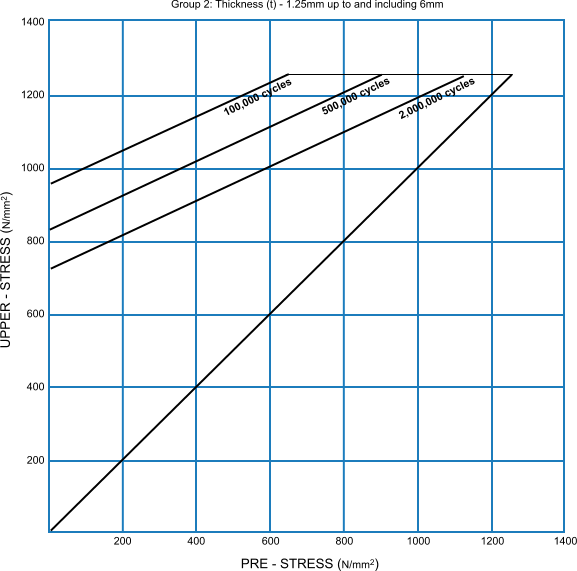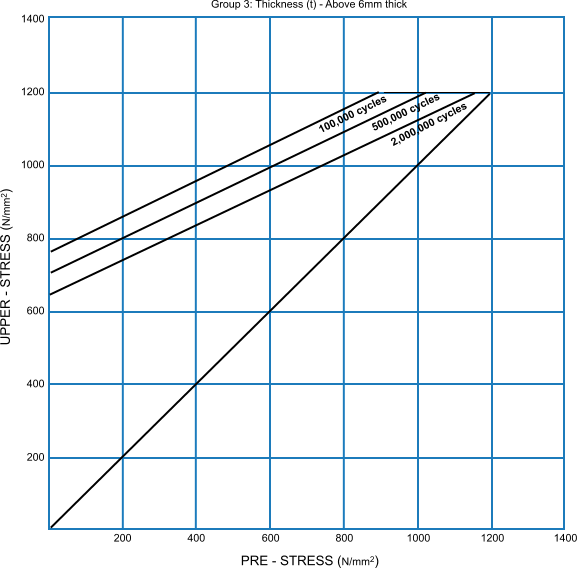Relevant only to DIN 2093 specification
The fatigue life diagrams attempt to provide the disc spring user with a means of assessing disc spring fatigue life using the data published on this website. This data is based on actual tests and extrapolated test results of this type of carbon steel disc spring.
For disc springs of a specialised nature, and those manufactured in any of the wide range of alternative corrosion and heat resisting alloys, we recommend that you seek expert assistance from ourselves.





